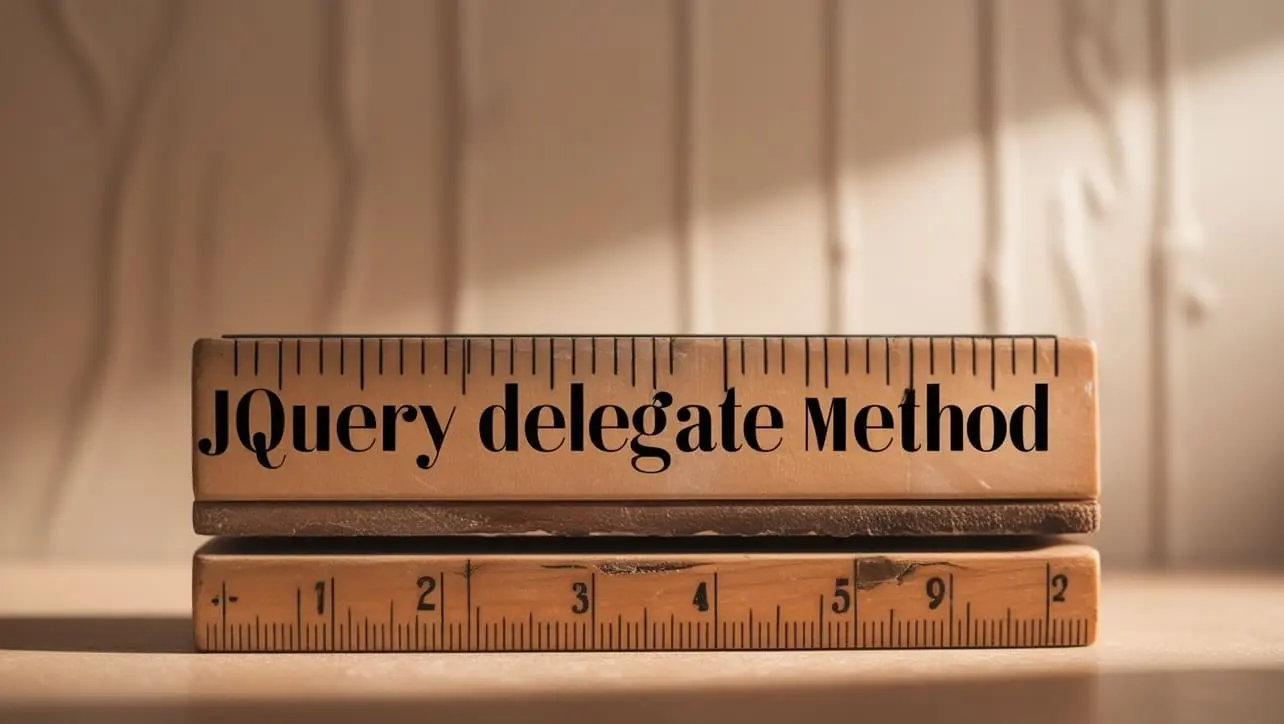
jQuery Topics
- jQuery Introduction
- jQuery Callbacks
- jQuery deferred
- jQuery selectors
- jQuery Ajax Events
- jQuery Ajax Methods
- jQuery Keyboard Events
- jQuery Keyboard Methods
- jQuery Form Events
- jQuery Form Methods
- jQuery Mouse Events
- jQuery Mouse Methods
- jQuery Event Properties
- jQuery Event Methods
- jQuery HTML
- jQuery CSS
- jQuery Fading
- jQuery Traversing
- jQuery Utilities
- jQuery Properties
jQuery .delegate() Method

Photo Credit to CodeToFun
🙋 Introduction
In jQuery, event delegation is a powerful technique for handling events efficiently, especially for dynamically created elements. The .delegate() method provides a convenient way to implement event delegation, allowing you to attach event handlers to elements that are not yet created at the time when the code is written. Understanding and mastering the .delegate() method can significantly improve the performance and maintainability of your code.
In this guide, we'll explore the usage of the jQuery .delegate() method with clear examples to help you harness its potential.
🧠 Understanding .delegate() Method
The .delegate() method in jQuery is used to attach an event handler to one or more parent elements, which will then delegate the handling of the specified event to the descendant elements that match the selector, even if they are added to the DOM dynamically after the handler is attached.
💡 Syntax
The syntax for the .delegate() method is straightforward:
$(parentSelector).delegate(selector, eventType, handler);📝 Example
Basic Usage:
Suppose you have a list of items and you want to attach a click event handler to each of them, even if they are dynamically added to the list later. You can achieve this using the
.delegate()method as follows:index.htmlCopied<ul id="itemList"> <li>Item 1</li> <li>Item 2</li> </ul>example.jsCopied$("#itemList").delegate("li", "click", function() { console.log("Clicked on: " + $(this).text()); });This will log the text of the clicked <li> element to the console, even if new <li> elements are added dynamically.
Event Delegation with Dynamic Content:
Let's say you have a button that dynamically adds new elements to a container, and you want to attach an event handler to these new elements as well. You can use
.delegate()to achieve this:index.htmlCopied<div id="container"> <button id="addButton">Add Element</button> <div class="dynamicContent"></div> </div>example.jsCopied$("#container").delegate(".dynamicContent", "click", function() { console.log("Clicked on dynamically added element."); });Now, whenever a .dynamicContent element within #container is clicked, the message will be logged to the console.
Improved Performance with Event Delegation:
Event delegation using
.delegate()can lead to improved performance, especially when dealing with large numbers of elements. Instead of attaching individual event handlers to each element, you attach a single handler to a parent element, reducing the overhead of event binding.
🎉 Conclusion
The jQuery .delegate() method provides a powerful mechanism for implementing event delegation, allowing you to handle events efficiently, even for dynamically created elements.
By understanding and mastering its usage, you can write cleaner, more maintainable code that performs well, particularly in scenarios involving dynamic content. Incorporate .delegate() into your jQuery toolkit to enhance the interactivity and responsiveness of your web applications.
👨💻 Join our Community:
Author

For over eight years, I worked as a full-stack web developer. Now, I have chosen my profession as a full-time blogger at codetofun.com.
Buy me a coffee to make codetofun.com free for everyone.
Buy me a Coffee












If you have any doubts regarding this article (jQuery .delegate() Method), please comment here. I will help you immediately.